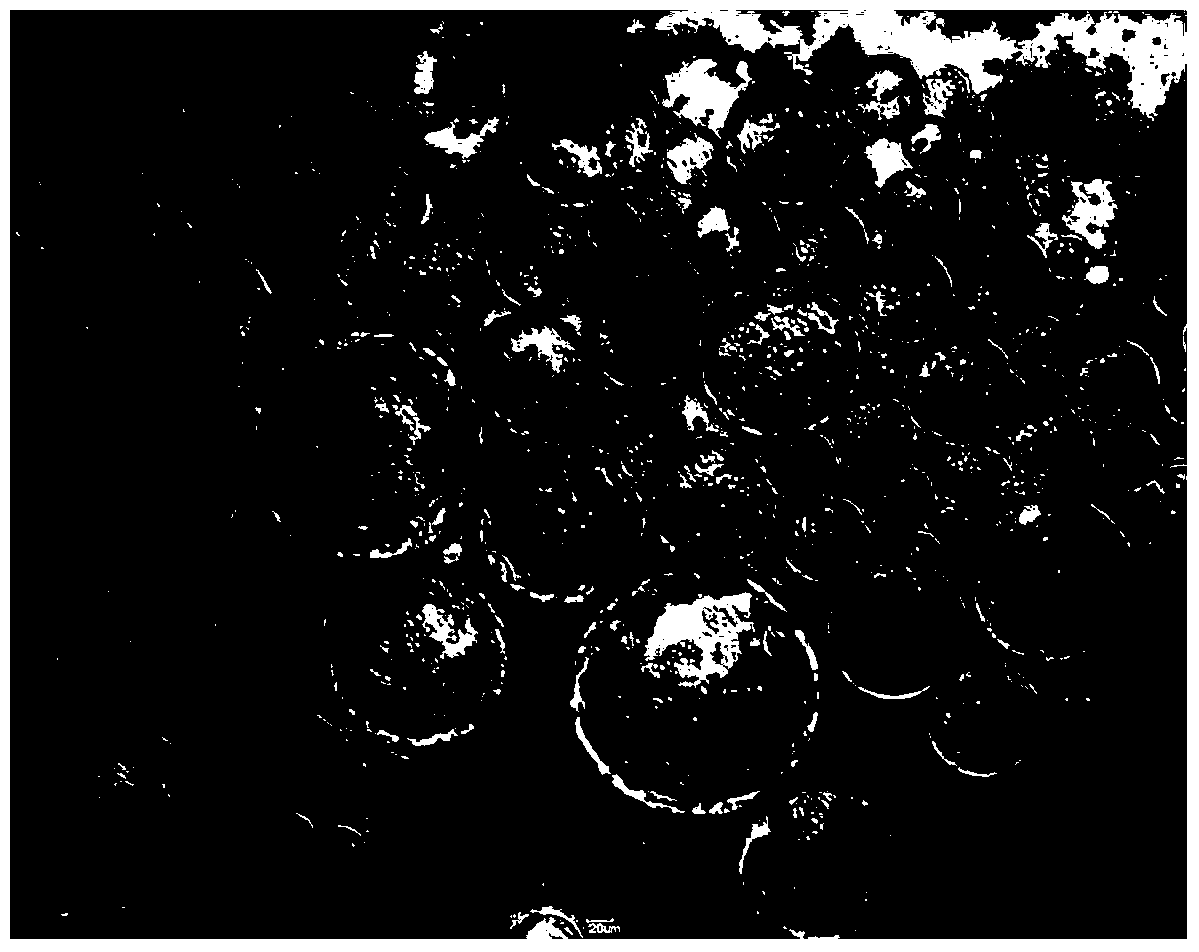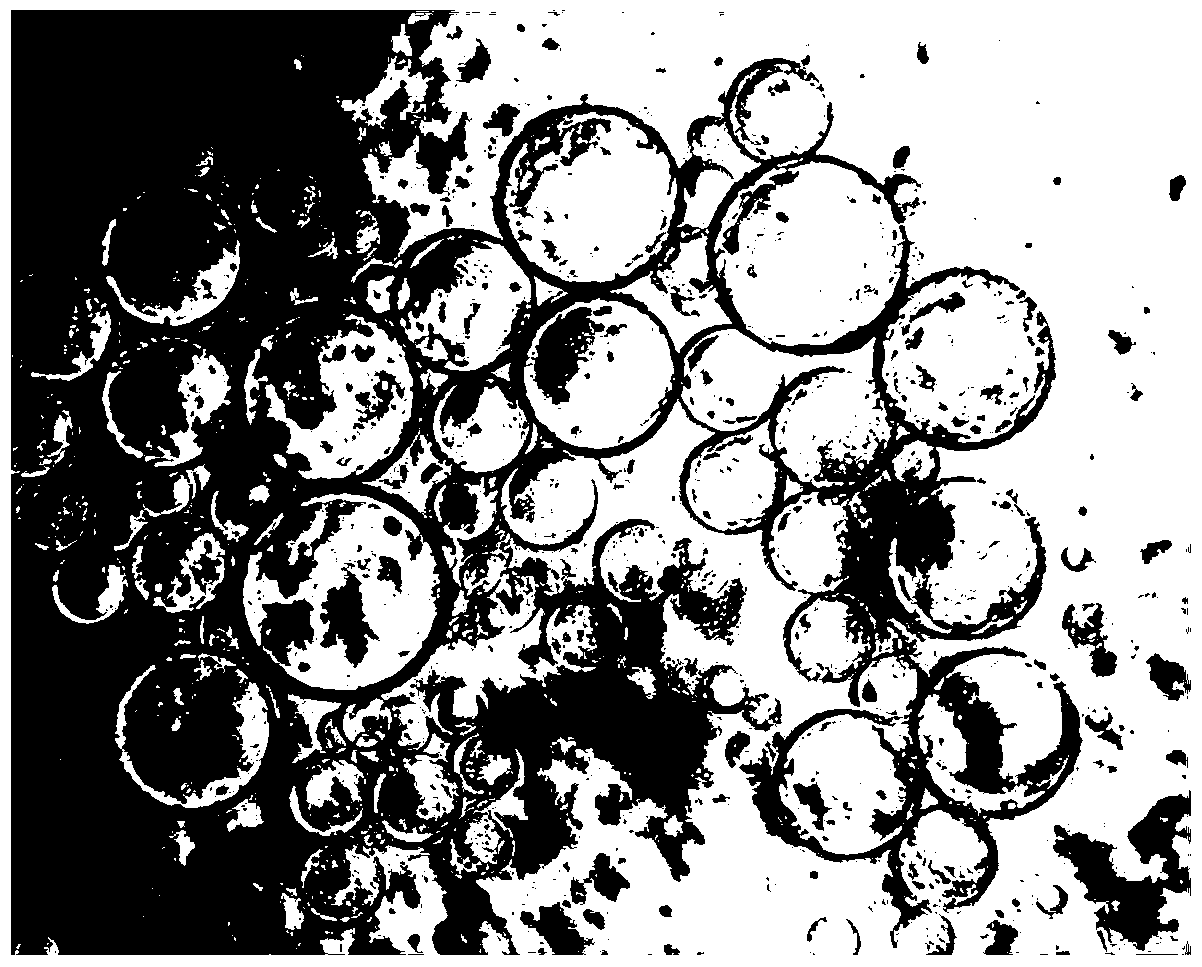A Method for Quickly Obtaining Protoplasts from Herba halophyta Leaf
A protoplast and halophyte technology, applied in the direction of plant cells, can solve the problems of weak halophyte research, achieve good results, eliminate waste, and achieve large yields
- Summary
- Abstract
- Description
- Claims
- Application Information
AI Technical Summary
Problems solved by technology
Method used
Image
Examples
Embodiment 1
[0029] Embodiment 1: a kind of method of fast obtaining grass blade protoplast, its main feature is that the steps are:
[0030] (1) For the planting of seedlings, select full halophytic grass seeds and plant them in flower pots in April, and the volume ratio of vermiculite to sand is 1:3;
[0031] (2) The selection of blades, when the seedlings obtained in step (1) grow to 3 months, cut off the blades near the 2 / 3 of the plant base with a blade, rinse with distilled water three times, and stand by;
[0032] (3) Obtaining protoplasts, dry the leaves obtained in step (2) with filter paper, cut them longitudinally along the main veins of the leaves with a blade, then put them into the enzymatic hydrolysis solution, and perform enzymatic hydrolysis for 2 hours at 22°C in the dark;
[0033] (4) For the purification of protoplasts, add an equal volume of washing solution to the enzymolysis solution after step (3), place it in the dark at 22°C, on a horizontal shaker at 30rpm for 15...
Embodiment 2
[0042]Embodiment 2: A method for rapidly obtaining the protoplasts of halophytes leaves. Take the leaves of potted seedlings for 3 months, wash them three times with distilled water, dry the surface with filter paper, cut them longitudinally along the main veins, and then place them at 25°C in the dark. After 3 hours of enzymatic hydrolysis under the same conditions, add an equal volume of washing solution to the petri dish, then place it on a horizontal shaker at 25°C and 30 rpm for 15 minutes in the dark, and then use a 5ml pipette to suck the enzymolysis solution into 10ml Put the test tube into a centrifuge at 25°C and centrifuge at 2000r for 10 minutes, use a pipette to absorb 5ml of the supernatant, observe it under an inverted microscope, and finally gently blow and beat the above-mentioned protoplasts to make them evenly distributed, then use a pipette to absorb Put one drop on a hemocytometer, cover with a cover glass, count under an inverted microscope, count three ti...
Embodiment 3
[0046] Example 3: A method for rapidly obtaining the protoplasts of halophytes leaves. Take the leaves of potted seedlings for 2 months, wash them three times with distilled water, dry the surface with filter paper, cut them longitudinally along the main veins, and then place them at 25°C in the dark. After 2.30 hours of enzymatic hydrolysis under the same conditions, add an equal volume of washing solution to the petri dish, then place it in a horizontal shaker at 25°C and 30 rpm for 12 minutes in the dark, and then use a 5ml pipette gun to inhale 10ml of the enzymolysis solution Put it into a centrifuge at 25°C and centrifuge at 2500r for 10min, use a pipette to absorb 4ml of the supernatant, observe it under an inverted microscope, and finally gently blow the above protoplasts to make them evenly distributed, then use a pipette Take a drop on a hemocytometer, cover it with a cover glass, place it under an inverted microscope, and count three times in a row, and take the aver...
PUM
 Login to View More
Login to View More Abstract
Description
Claims
Application Information
 Login to View More
Login to View More - R&D
- Intellectual Property
- Life Sciences
- Materials
- Tech Scout
- Unparalleled Data Quality
- Higher Quality Content
- 60% Fewer Hallucinations
Browse by: Latest US Patents, China's latest patents, Technical Efficacy Thesaurus, Application Domain, Technology Topic, Popular Technical Reports.
© 2025 PatSnap. All rights reserved.Legal|Privacy policy|Modern Slavery Act Transparency Statement|Sitemap|About US| Contact US: help@patsnap.com



